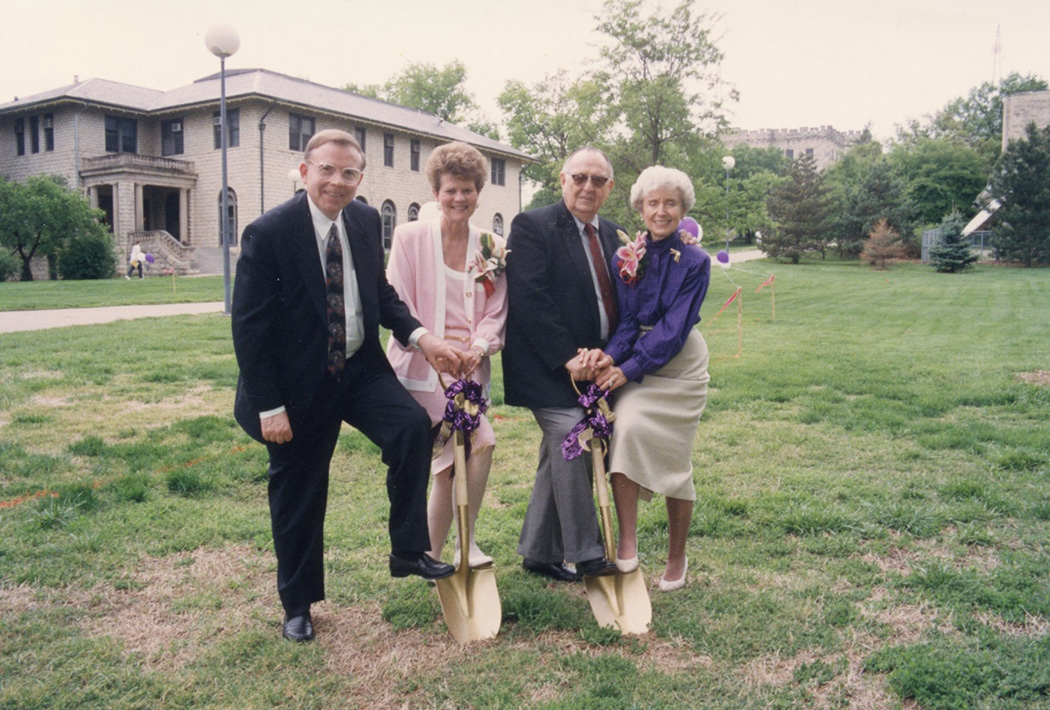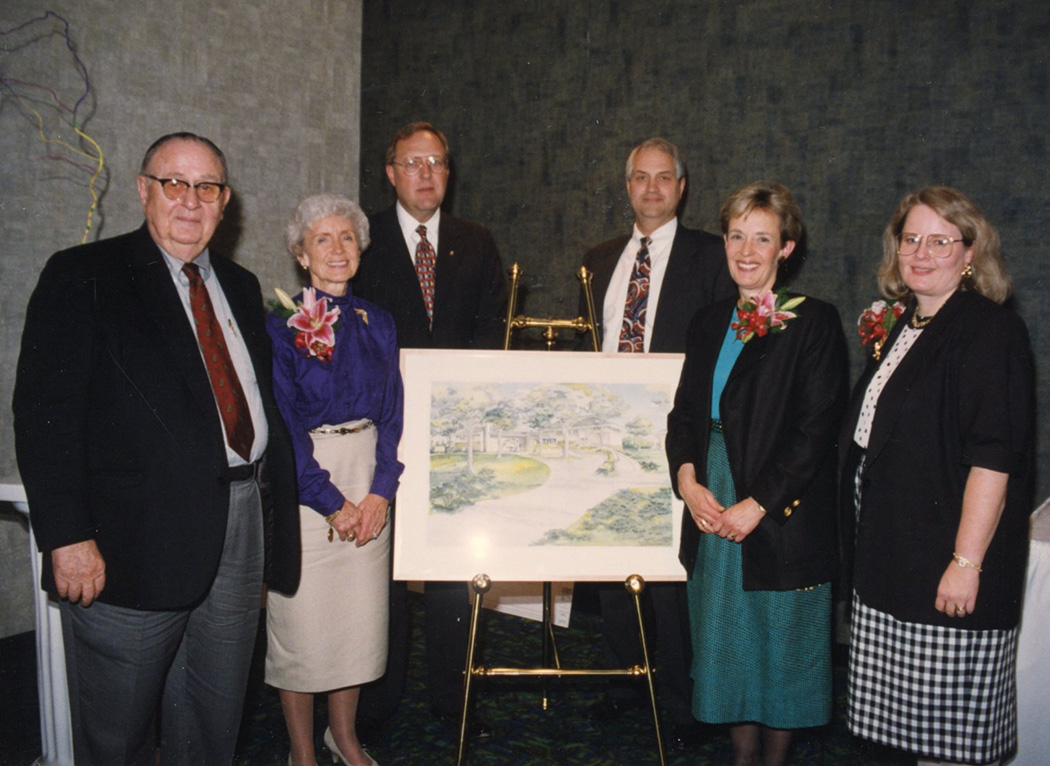2 Journey to an Art Museum
By Ruth Ann Wefald

I am so happy to join others in celebrating the 25th anniversary of the Marianna Kistler Beach Museum of Art. I have so many wonderful memories of the journey that led to the opening of the museum.
Before Jon was even inaugurated as the 12th president of Kansas State University, he was getting letters from alumni, staff, students, and others about the need for a new art museum for the university. While the university had been gathering a wonderful art collection through donations and purchases, there was no central place for the public to see it. Many were saying that it was time for K-State to join the number of public universities that had lovely art museums to exhibit their collections and to show other works through special exhibits.
As someone who had been involved with the arts community in Minnesota, I asked Jon if I might look into the possibility of a new art museum. I was introduced to the chairman of the art department, Chuck Stroh, and the curator of the collection, Jessica Reichman, shortly after we arrived on campus. They were excellent guides in helping me become informed about what was in the collection and the past efforts to gather a group of supporters who might be interested in building a museum. Together we began to explore what it would take to build a new art museum for K-State.
The foundation and the alumni association of the university were both very supportive of the project, but it still seemed like a daunting project. As the president of the KSU Foundation, Art Loub told me there were not enough art department graduates with sufficient means to make such a campaign successful. And there was the added problem that very few people even knew that the university owned an art collection.
With those concerns in mind, we fashioned a program to cover the state with informative meetings about the state of the arts at K-State. The K-State Alumni Association president and CEO, Amy Renz, was especially helpful in setting up these luncheon meetings, as was the KSU Foundation. We frequently held luncheons that were organized by local alumni who were committed to the idea of building an art museum. We had a program that consisted of a group of students performing, the dean of the College of Arts and Sciences talking about the state of the arts at the university, Jessica talking about and showing slides of the beautiful art collection that was owned by the university, and me talking about the need for K-State to join the other prestigious liberal arts institutions that had museums and the benefits that would be derived from it.
It took more than two years to complete the visits around the state, and then we needed to start another round to begin focusing in on the fund-raising aspect of the campaign. To address the concern of the foundation that there were not sufficient graduates of the art department with the means to fund this campaign, it was decided to fold this effort into the campus-wide Essential Edge Campaign, which began in 1990. That way graduates of other colleges could designate the majority of their gift go to the college of their choice within the university and a portion of their gift could be designated for the art museum campaign.
Two things that I will never forget about the fund-raising campaign are when we visited R. M. Seaton in Coffeyville, Kansas, to ask for his support of the art museum. He said that many people had talked about an art museum for K-State, but, it was like the Holy Grail — everyone thought it was a great idea, but no one could find it. As it turned out, R. M. Seaton became one of the major donors to the campaign and helped us build the momentum to reach our goal. The second event I remember was when we held an event in Salina, Kansas. Marianna Beach attended the event and expressed some interest in the campaign. I knew that if Ross and Marianna would agree to join the campaign that the goal was within reach. At a dinner that Jon and I hosted for them, we asked for their support and they agreed. The foundation had prepared a rendering of the art museum and what it might look like. That night we all signed the back of it and presented it to Ross and Marianna. It was a night for rejoicing!
Chuck Reagan, Jon’s chief of staff, was a great help during the whole art museum campaign. He and Tom Rawson, the vice-president for administration and finance, and Gary Hellebust, the president of the KSU Foundation, were all instrumental in coordinating the selection of the architect and the design of the museum. Bill Stamey, dean of the College of Arts and Sciences, was another consistent and strong supporter of the arts at K-State and an advocate for building the museum.
A delightful addition to the museum came as a result of the support of Crosby Kemper Jr., the CEO of UMB. He suggested that we meet with Dale Chihuly, a glassblower from Seattle, Washington, to discuss having a special piece designed for the entryway of the museum. As it turned out, Chihuly was a special friend of the architect that had been selected for the Beach Museum of Art, Arthur Andersson. They had collaborated on other projects and were happy to work together again. We were able to visit the glassblowing factory boathouse where Dale worked and to see how the pieces were made. He lived in the boathouse, so we were able to see his amazing home with its lap pool that had hundreds of shards of broken glass at the bottom of it under a layer of glass. It was beautiful! We were delighted with the piece that Dale created for the museum. It was orange, which reminded him of the burning prairie or the sunsets, and each piece was fashioned like a shock of wheat. It was so perfect for our museum in beautiful Kansas.
At the opening dedication of the Marianna Kistler Beach Museum of Art on October 13, 1996, just a little over ten years after Jon had become president of the university, I remember walking up the beautiful stairway of the museum with Marianna. I said to her how happy it made me that the museum was named for a person who was beautiful both inside and out. Marianna truly was one of the most gracious, kind, caring, and loving people I have ever met. I will always be grateful for the generous support of Ross Beach in naming the museum after his beloved wife.
*

*


